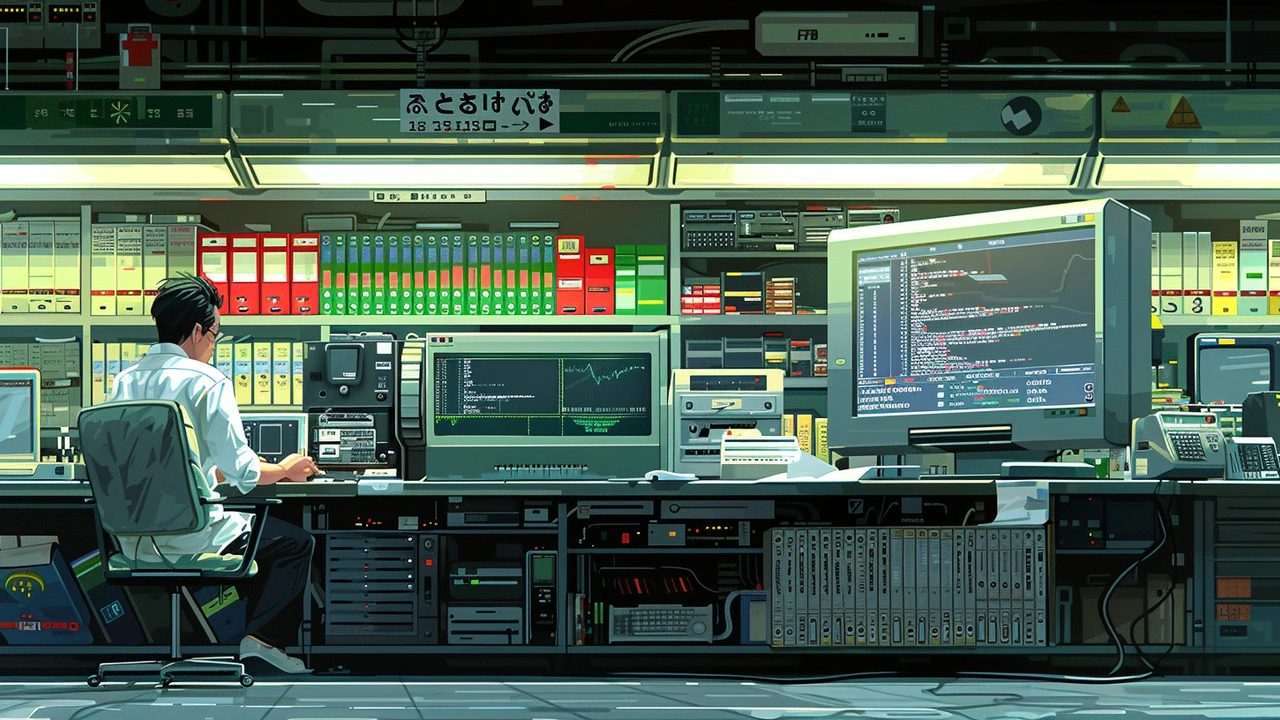Tracing the Journey of Debugging: From Historical Roots to Modern Solutions

Tracing the Journey of Debugging: From Historical Roots to Modern Solutions
Unraveling the Origins of Debugging
The journey into the world of debugging takes us back to a time before the sleek interfaces and sophisticated tools we've come to rely on. In the earliest days of computing, debugging was a drastically different challenge, rooted in the mechanical and electric intricacies of the machines of the era. The term 'debugging' itself is popularly attributed to Admiral Grace Hopper in the 1940s, when her team found a moth causing issues in the Harvard Mark II computer, physically embodying the concept of a 'bug' in the system. This anecdote, whether apocryphal or not, charmingly illustrates the tangible nature of early debugging efforts.
As technology advanced, so did the complexity of debugging. The transition from mechanical to electronic systems introduced a new realm of challenges, as errors were no longer visible to the naked eye. Debugging in this era required a deep understanding of the electronics and logic that powered computing devices, demanding a more analytical approach to identifying and fixing errors. This period laid the foundational skills and mindset needed for future generations of debuggers.
The Shift Towards Software Debugging
With the advent of higher-level programming languages and more complex computing systems, the focus of debugging shifted from hardware to software. This transition marked a significant turning point in the history of debugging, as developers now had to grapple with bugs that were buried in lines of code rather than in the physical components of the machine. The emergence of software development brought with it new tools and methods designed to assist in the identification and resolution of bugs, including the first debugger tools which allowed for step-by-step execution and state inspection of programs.
As programming languages evolved and systems became more complex, the techniques and strategies for debugging also had to adapt. The introduction of integrated development environments (IDEs) in the 1980s and 1990s, for example, significantly streamlined the debugging process by providing developers with powerful tools for writing, testing, and debugging code all within a single interface. This era also saw the rise of automated debugging tools that could identify potential issues before they became problematic, marking a shift towards more proactive debugging strategies.
Innovations in Debugging Techniques
Over the years, debugging has benefited greatly from technological innovations that have made the process more efficient and effective. One of the most significant advancements has been the development of dynamic analysis tools, which allow developers to examine the behavior of their software in real-time, providing immediate feedback and insights that can be used to identify and fix bugs more quickly. Another major innovation has been the rise of visual debugging tools, which use graphical representations of data structures and program execution paths to help developers understand complex software behavior.
These technological advances, combined with the growing emphasis on software quality and reliability, have contributed to the development of a wide range of debugging methodologies, from traditional breakpoint debugging to more modern approaches like log-based debugging and anomaly detection. The field of debugging continues to evolve, driven by the constant need for more effective ways to identify, diagnose, and fix software issues.
The Role of Collaboration and Community in Debugging
Debugging has always been a collaborative effort, but the rise of the internet and open-source software has taken this to a new level. Online forums, developer communities, and collaborative platforms have become invaluable resources for debuggers, providing access to a wealth of knowledge, experience, and tools. The open-source movement, in particular, has played a pivotal role in the evolution of debugging, as it has led to the creation of a vast array of free, community-developed debugging tools and libraries that are accessible to developers around the world.
This collaborative ethos has not only broadened the range of resources available for debugging but has also fostered a culture of knowledge sharing and innovation. Developers can now easily share insights, strategies, and code snippets, helping others to overcome similar challenges and pushing the boundaries of what can be achieved with debugging techniques.
Current State and Future Directions in Debugging
Today, debugging stands at the crossroads of tradition and innovation. On one hand, foundational techniques and principles continue to play a crucial role in the debugging process; on the other hand, new technologies and methodologies are constantly emerging, offering novel ways to tackle the ever-growing complexity of software systems. The rise of artificial intelligence and machine learning, for instance, is beginning to shape the future of debugging, promising tools that can predict potential bugs or automatically generate fixes for known issues.
As we look to the future, it's clear that the evolution of debugging is far from over. The increasing complexity of software, the growing emphasis on security and reliability, and the rapid pace of technological advancement are all factors that will continue to drive innovation in debugging. With the ongoing contributions of the global developer community and the relentless pursuit of more efficient and effective debugging strategies, we can anticipate the emergence of even more advanced tools and techniques designed to meet the challenges of tomorrow's software development landscape.
Tips and Best Practices for Effective Debugging
Despite the advances in debugging tools and techniques, the core principles of effective debugging remain as relevant as ever. Being methodical, patient, and systematic in your approach to debugging can make a significant difference in quickly identifying and resolving issues. It's important to understand the common causes of bugs, such as logical errors, syntax mistakes, or incorrect assumptions, and to develop a keen sense for recognizing these patterns in your code.
Equally important is the practice of continuous learning and adapting to new tools and methodologies. The field of debugging is dynamic, and staying informed about the latest advances can provide you with a competitive edge. Taking advantage of the collective wisdom of the developer community, through forums, articles, and open-source projects, can also provide invaluable insights and shortcuts for effective debugging.
About
CH Tech Development is a premier resource for the latest updates and insights in the world of technology development. We provide extensive information, articles, and guides on cutting-edge technological advancements. Explore our site to empower your knowledge about the dynamic field of tech development.
Latest Posts


A Deep Dive into Coding: The Ultimate Programming Tutorial
By Silas Hawthorne Jul 26, 2023

Revolutionizing Green Spaces: How AI is Shaping the Future of Gardening and Horticulture
By Raymond Sterling Feb 2, 2024

The Role of Coding Skills in Entrepreneurial Success
By Cassandra Upton Nov 17, 2023

Write a comment